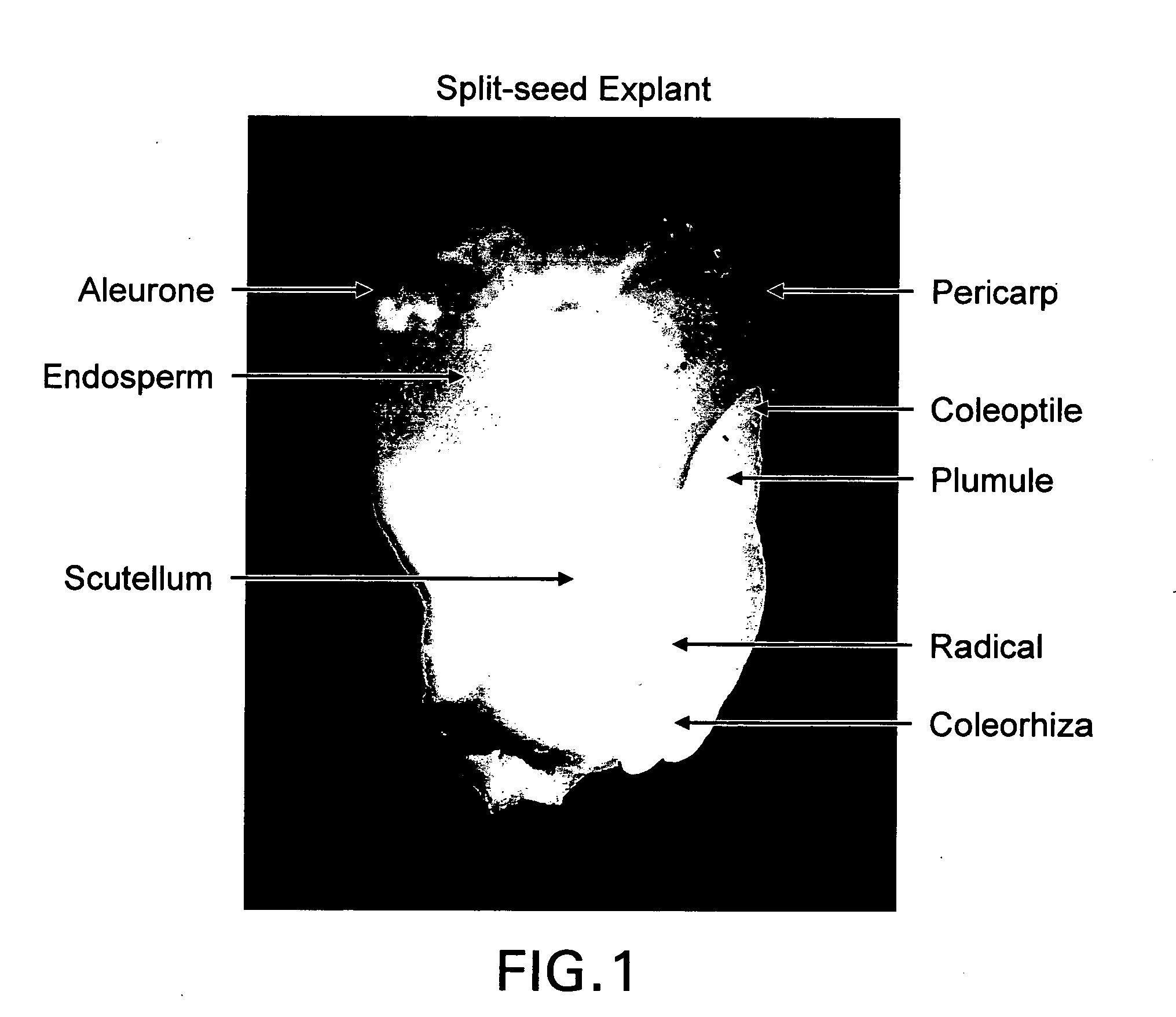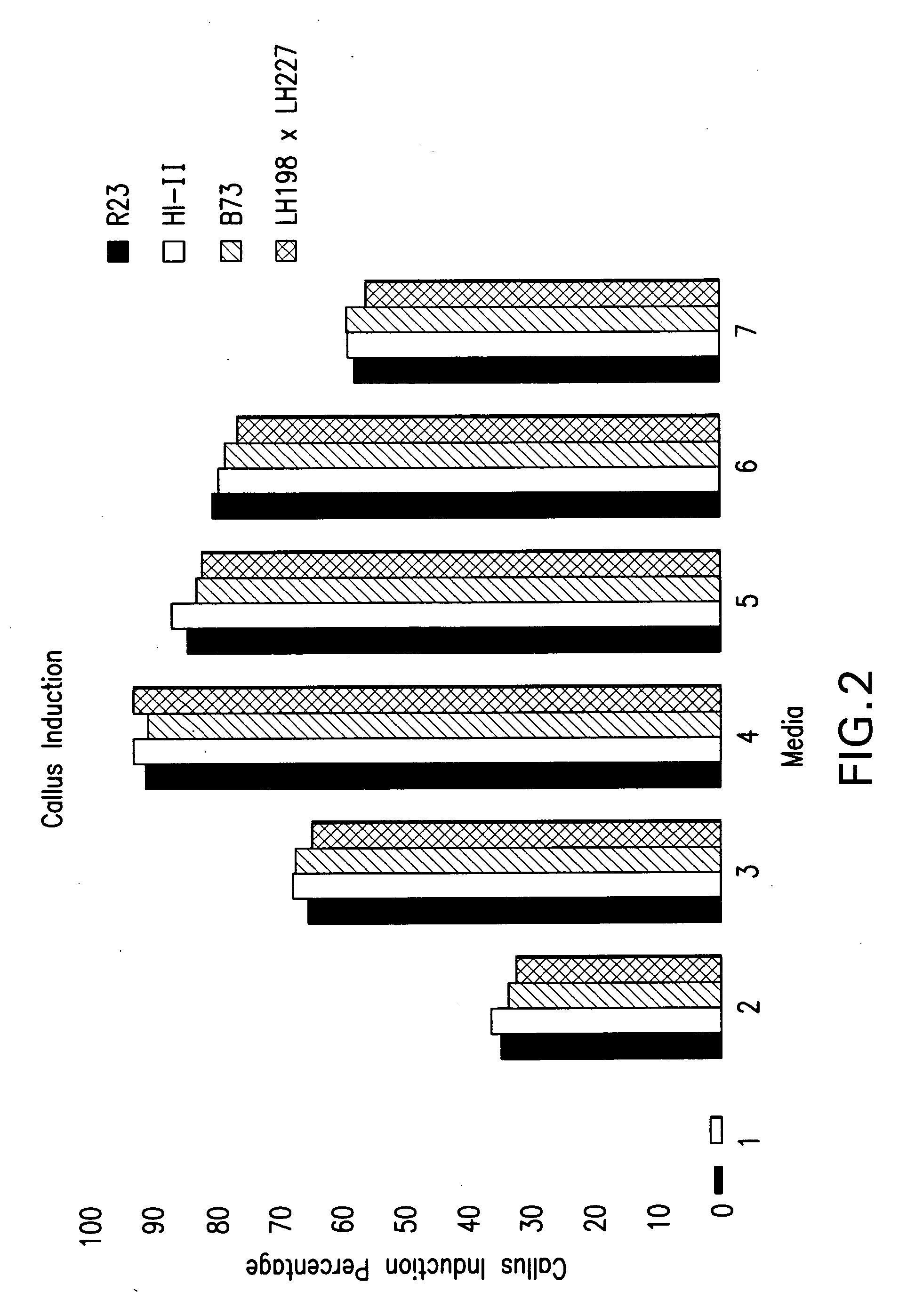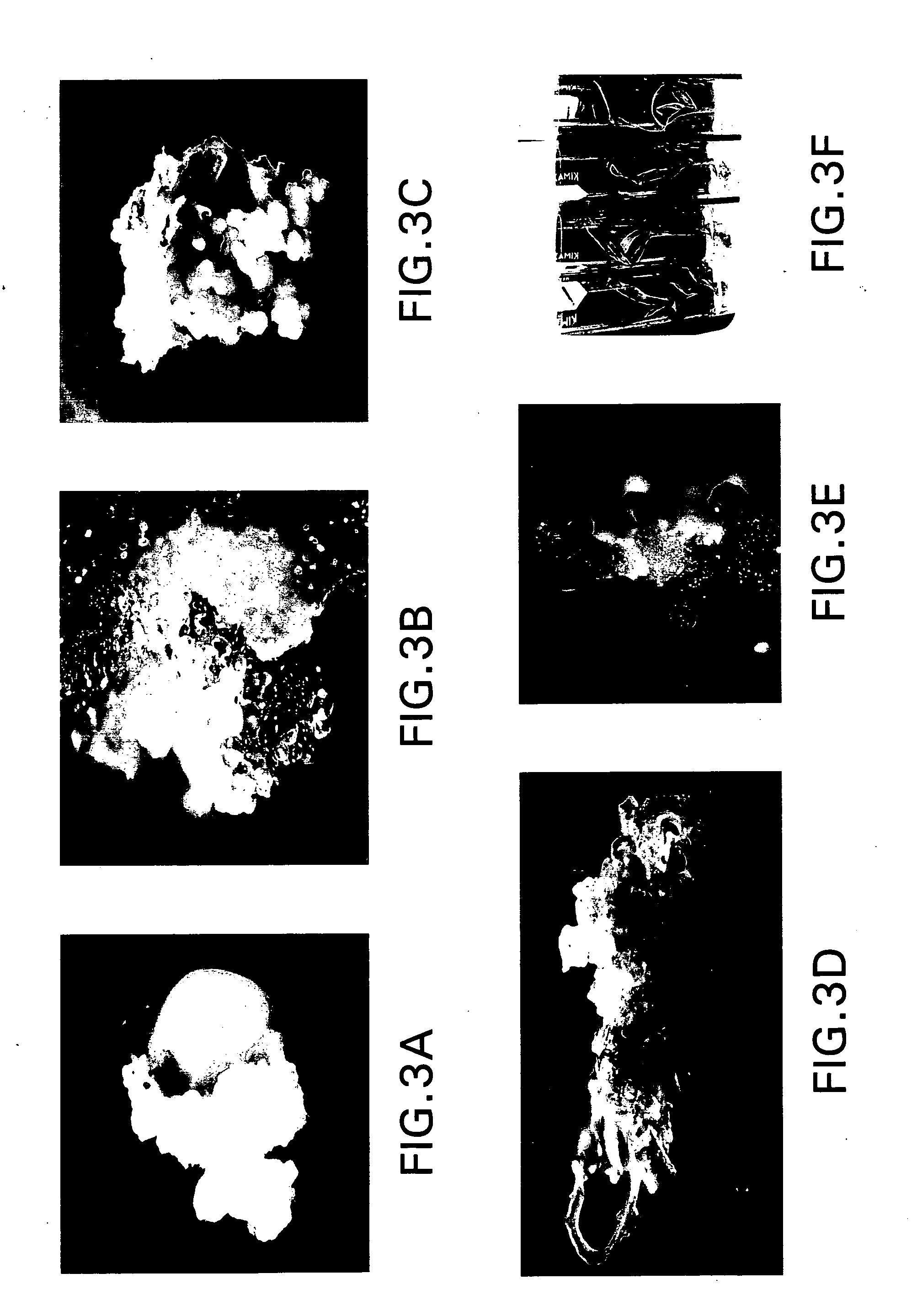Novel maize split-seed explant and methods for in vitro regeneration of maize
a technology of in vitro regeneration and split seed, which is applied in the field of efficient and novel maize transformation and regeneration system, can solve the problems of inability to maintain totipotency, over coming limitations directly related to genotype dependence, and persisting stable cell culture and over coming limitations, and achieves severe limitations , the effect of maintaining the totipotency
- Summary
- Abstract
- Description
- Claims
- Application Information
AI Technical Summary
Benefits of technology
Problems solved by technology
Method used
Image
Examples
example 1
Preparation of Seeds and Pre-Treatment with a “Priming Medium”
[0071] Mature dry seeds of are washed with antibacterial soap and surface sterilized with 70% ethanol and soaked in 0.1% mercuric chloride (HgCl2) for 7 minutes. For callus induction, the seeds are then rinsed several times with sterile water and soaked for 48 hours in a “pre-split callus priming medium” comprising LS (Linsmaier and Skoog 1965) liquid medium supplemented with 2,4-D at 3 mg / l.
[0072] For multiple shoot induction the seeds are soaked in sterile water for 24 hours and then germinated for three to four days on a “pre-split shoot priming medium” comprising MS (Murashige and Skoog 1962) basal salts supplemented with 2,4-D at 2 mg / l.
example 2
Callus Formation and Maintenance
[0073] White and soft callus formed on the surface of split-seed explants is removed after one week for further growth on “primary calli maintenance medium” (FIG. 3B). Callus initiation from the split-seed is observed in four day old cultures. After one month in culture, highly proliferated calli (FIG. 3C) are transferred to an “embryogenic callus induction medium” containing 2,4-D at 0.1 mg / l and BAP at 0.5 mg / l to maintain embryogenic callus (FIG. 3D). The callus is sub-cultured every two weeks. Following the sub-culture, interestingly two types of callus are observed: embryogenic callus and organogenic callus. Organized somatic embryos are observed from the embryogenic callus (FIGS. 3D, E and F) and (FIG. 6). Direct shoot buds are also observed from the organogenic callus (FIG. 3E). Calli are further sub-cultured on a “callus / somatic embryo shoot induction medium,” which is a modified MS media supplemented with various concentrations of BAP. The n...
example 3
Multiple Shoot Formation and Plantlet Generation
[0074] Germinated mature seeds (three to four days germination) are split in half longitudinally to create split-seed explants. Split-seed explants are incubated on a “split-seed explant shoot induction medium” under 16-hour soft white light at 27° C. to allow formation of shoots. The shoots are separated from the split-seed explants after three-four weeks and incubated in a shoot elongation media containing MS basal salts and B5 vitamins. The elongated shoots are exposed to a rooting medium comprising MS basal salts supplemented with 0.8 mg / l NAA (1-naphthaleneacetic acid) to allow formation of rooted plantlets. The rooted plantlets are transferred to soil and kept in the growth chamber under 16-hour soft white light at 27° C. and 67% humidity for one week prior to transfer to the green-house.
PUM
| Property | Measurement | Unit |
|---|---|---|
| Concentration | aaaaa | aaaaa |
| Concentration | aaaaa | aaaaa |
| Concentration | aaaaa | aaaaa |
Abstract
Description
Claims
Application Information
 Login to View More
Login to View More - R&D
- Intellectual Property
- Life Sciences
- Materials
- Tech Scout
- Unparalleled Data Quality
- Higher Quality Content
- 60% Fewer Hallucinations
Browse by: Latest US Patents, China's latest patents, Technical Efficacy Thesaurus, Application Domain, Technology Topic, Popular Technical Reports.
© 2025 PatSnap. All rights reserved.Legal|Privacy policy|Modern Slavery Act Transparency Statement|Sitemap|About US| Contact US: help@patsnap.com



